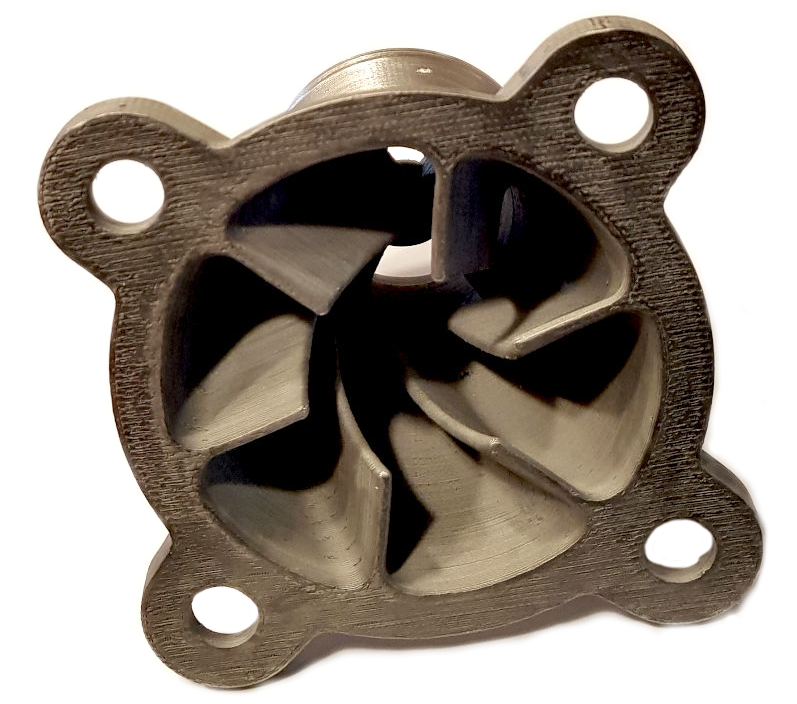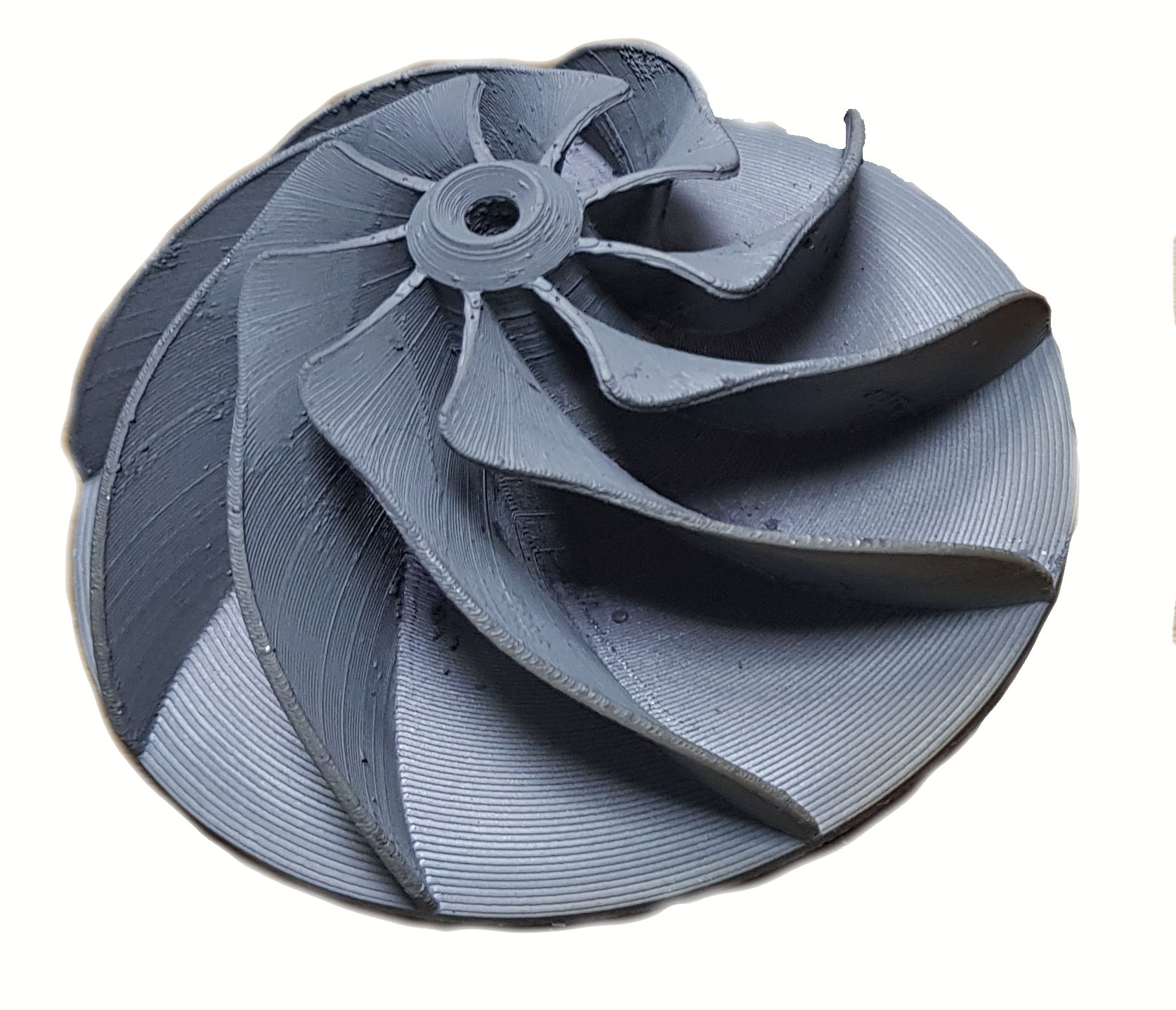3D Printing in Maintenance & Repair
For those unfamiliar, 3D printing works like something out of science fiction—a machine uses a computer file to manipulate a specific material (such as plastic or metal) layer-by-layer to form a complete, three-dimensional object. The whole process is schematically represented in the following diagram:

Schematic Representation of the steps for replacing a part through 3D printing
In Maintenance and Repair, 3D printing has an obvious advantage, as main 3d printing limitations are in this case irrelevant. In addition, small advantages of Additive Manufacturing have, in this field, disproprionate influence.
Traditional Manufacturing strongly outmatches Additive Manufacturing for simple parts in mass production, but machine components are always complicated and in small lots or even in lots of a single piece.
On the other hand, bypassing expensive and time consuming tooling and elevated set-up costs, which are necessary in traditional manufacturing, strongly suggests the Additive Manufacturing.
In a number of manufacturing scenarios, 3D-printed parts already provide highly reliable alternatives to traditional replacement parts.
What are the benefits of 3D Printing for Maintenance Management?
-
Reduces spare parts inventory costs. Maintaining an inventory of spare parts isn’t free; it can cost thousands of euros each year just to maintain a storeroom full of parts to repair machinery. Parts that might stay in the warehouse for years. Optimized logistics have strongly improved the situation, but still there is much to be done. With 3D printing we can strongly improve the situation.
Parts with long delivery times are the first candidates for printing.
-
Produce discontinued parts. If maintained properly, assets in a manufacturing plant can operate for many years, far beyond the guaranteed period by the manufacturer. So, inevitably, a machine will become outdated and spare parts may be difficult to find, too expensive to order and too time consuming to source them from custom traditional manufactures.
3D Printing of discontinued, high-value parts is a promissing solution for keeping older assets running longer.
-
Reduce assembly costs. Small design enhancements on existing parts, by just a very limited exploitation of the design freedom offered by additive manufacturing, can lead to substantial improvements. Incorporation of centering featurs, which where impossible to machine, small geometric deviations in order to provide sufficient space to handle fasteners, features for easy preassemble to hold parts together before screwing etc are some of the ideas that will reduce assembly costs.
3d printing of complex auxiliary assembly tools is another important possibility.


Future Challenges
-
Further improvement of the lead times.
It is possible to ommit the time for Reverse Engineering (3d scanning and modelling). Especially 3d modelling is a time consuming process with excessive labor work, as scanned 3d models have many tiny -or not so tiny...- imperfections that must be manually one-by-one corrected, before the model might be forwarded for printing. It is also not trivial the enginnerering work that is needed, in order to identify tolerances and post-printing operations.
The challenge lies in the storage of technical documentation. Solid 3d models and engineering drawings, if available, will significantly reduce the lead time for the printed components. Anyhow, Cad files and 2D drawings for components are cheaper to store than the components themselfs.
-
Assembly consolidation.
Additive manufacturing has little geometrical limitations compared to traditional manufacturing. Conformal Cooling channels, co-printed pre-assembled components with relative degrees of freedom and one-piece containers with internal functional moving components incorporated into a single 3d printed part, open a new horizon on the term «component».
A whole assembly of different components and fasteners might be replaced by a single 3d printed component.
3D Printing. In-house or outsourced?
At the beginning, stereolithography and 3d printing had almost the same meaning, as one was exactly the other.Today, the term 'Additive Manufacturing' comprise some tenths of different production processes. Take a look on this handbook for an overview of the additive manufaturing universe.
Additive Manufacturing has been developped as a composite industry with many different processes with substantial advantages and disadvantages. There is no 'universal' process. For each component, the suitable combination of process-machine-material must be selected.
So, except of the case, where parts with similar geometry, weathering resistance, size and strength will be printed, it will be not practical for any company to:
- Invest in a wide range of 3d printing machines.
-
Develop in-house the enginnering expertise to identify the one suitable process among all available in the market. Either from traditional or additive manufacturing.
From the manufacturing perspective, Additive Manufacturing is not a different world. It is only an additional manufacturing process, just the newest! As all other processes both compete and complement the others.
Thus, 'How to manufacture' is a dilemma too complicated and extremely fast evolving. A satisfactory engineering know-how is an investment hardly justified for serving just a single business unit.
-
Even if the best combination of processes has been identified, implementation again demands a very high level of accumulated engineering knowledge.
Many different technologies, materials tailor made and important size restrictions transforms the common perception of engineering skills. A new mixture of mechanical, chemical and process engineering has been evolved and academic programs can hardly adapt.
Unless a consolidation happens in the 'Additive Manufacturing Industry', there will be a strong lead of the experienced specialists, especially those, who have evolved from the traditional production.